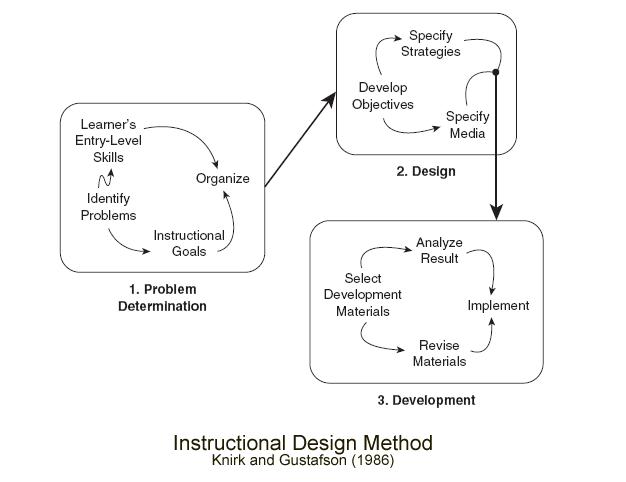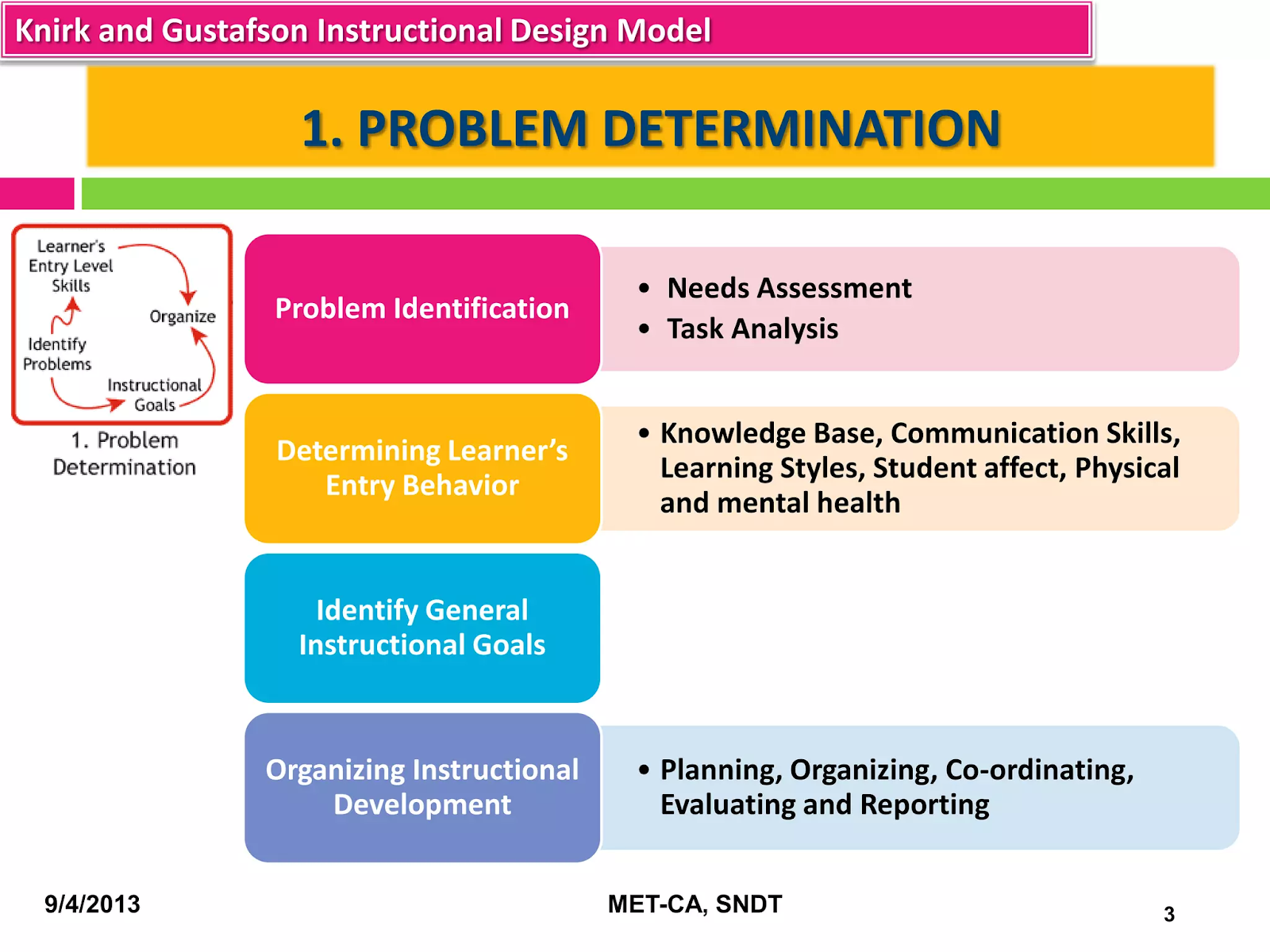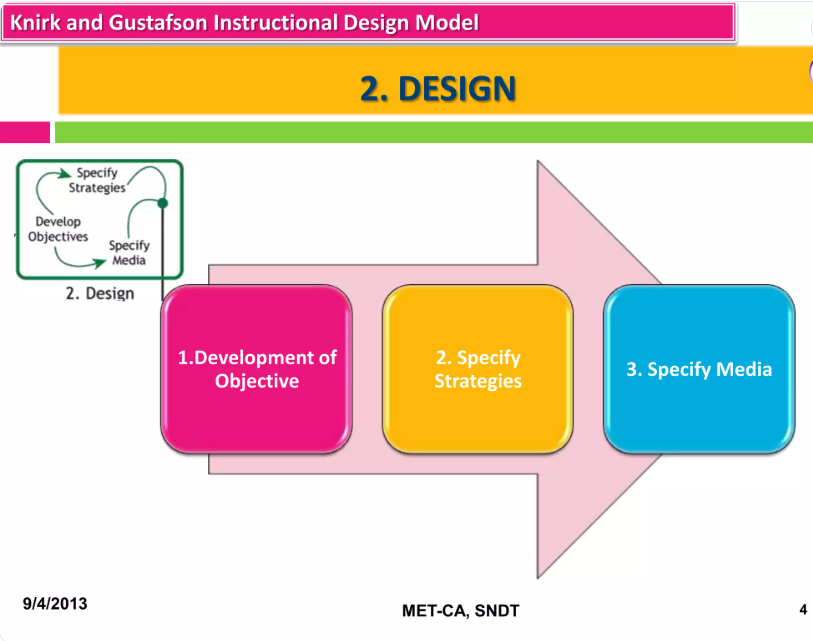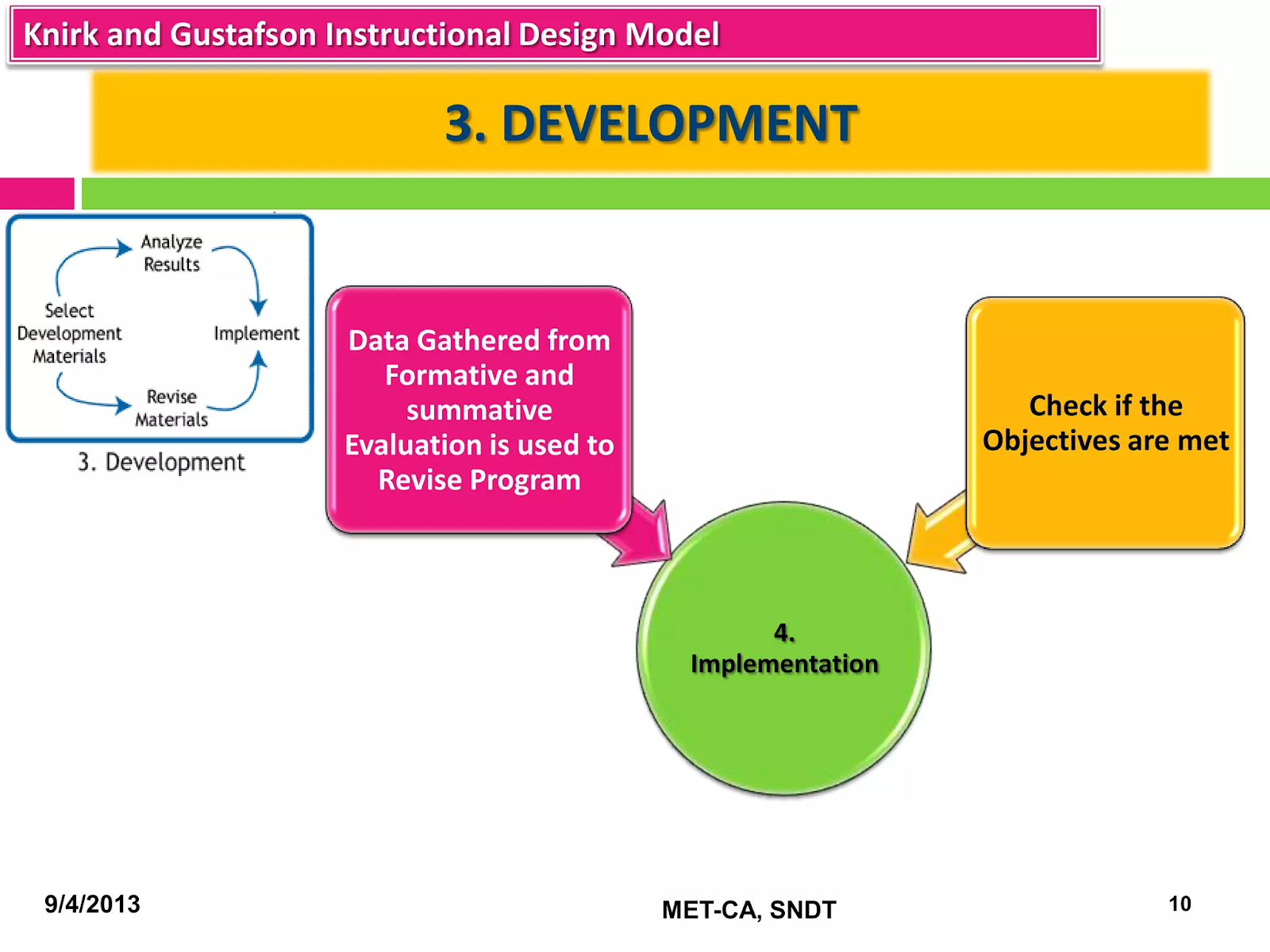The 3 Stages of Knirk and Gustafson Model for Instructional Design
The Knirk and Gustafson Model for instructional design helps instructional designers develop targeted learning materials. Read now to explore its 3 stages.
The Knirk and Gustafson Model for instructional design helps instructional designers develop targeted learning materials. Read now to explore its 3 stages.
.webp)
Creating effective training programs often feels like a challenge for instructional designers and trainers. One common issue is ensuring that training truly addresses the specific performance gaps or learning problems without wasting time and resources on irrelevant content.
The Knirk and Gustafson Model offers a practical solution to this problem. It provides a clear, three-stage process that focuses on identifying the real training needs, designing targeted learning objectives, and developing effective course materials.
The model breaks instructional design into three manageable phases: Problem Determination, Design, and Development. Following these phases ensures you’re creating meaningful and impactful learning experiences that are directly aligned with learner needs and organizational goals.
Let’s break down each stage of the Knirk and Gustafson Design Model and learn how we can implement it in our next training session.
The Knirk and Gustafson Model was developed in 1986 by Frederick Knirk and Kent Gustafson. This instructional design model simplifies the course creation process into three essential stages: Problem Determination, Design, and Development.

Unlike some more complex models, Knirk and Gustafson’s approach zeroes in on practical problem-solving, making it ideal for targeted training projects, including smaller-scale e-learning modules. It guides designers to first clearly identify what learning problem or gap exists, then plan the best instructional strategy, and finally develop the materials needed to deliver an effective solution.
Here is what each stage of the Knirk and Gustafson Model includes:

The first step sets the foundation for successful instructional design. It identifies the core performance issues or learning gaps that need to be addressed. This means understanding where learners currently stand in terms of skills and knowledge versus where they need to be to perform their jobs effectively or meet learning goals.
At this stage, instructional designers have to:
This phase is crucial because without a clear understanding of the “problem,” any training developed afterwards risks being irrelevant or ineffective. Using surveys, interviews, or performance data can provide valuable insights here.
Suppose a company notices a sudden surge in its customer service complaints. To address this issue, the company should conduct a needs assessment to identify gaps in employees' communication skills. Then it should perform a task analysis through surveys or interviews to identify the specific skills or knowledge employees are lacking.
Finally, the company should define measurable learning goals based on what it discovered. If employees struggle with active listening, a goal might be: “Learners will demonstrate effective active listening in customer interactions.”
This clear problem definition ensures the training solution targets the right issue rather than just creating content for content’s sake.

Once the problem is well-defined, the Design stage focuses on crafting a strategic plan for closing the identified gaps. This includes specifying precise learning objectives and selecting the instructional strategies and materials best suited to achieve these goals.
Typical tasks during the Design phase involve:
This stage ensures that the solution is thoughtfully planned before moving into material creation, setting a strong framework to drive the development process effectively.
Using the customer service example, the company's design objectives might include: “Learners will apply active listening techniques in role-play scenarios.”
The decision-makers now have to choose instructional methods, such as interactive e-learning modules, video demonstrations, and scenario-based quizzes. The best approach is to consult subject-matter experts who understand the required skills. They know how to design with the learner experience in mind.
A good design phase not only plans what content to deliver but also how to deliver it effectively.

The Development stage is where instructional plans take tangible form as course materials are created. This phase involves producing content like lesson texts, videos, assessments, and interactive elements based on the previously crafted design blueprint.
Important aspects of Development include:
This stage is dynamic and iterative, emphasizing continuous improvement of materials until they fully meet learning objectives. Deployment is only the beginning, as ongoing evaluation and updates help maintain course relevance.
Once the company has a design plan, it can start developing content according to it. The content can include active listening video tutorials, interactive quizzes, or job aids.
User testing and feedback are an important part of this stage. The company should conduct user testing by running pilot sessions with a small group of learners and collecting feedback on clarity, usability, and engagement.
Now, based on feedback, the training materials should be revised. Maybe learners found some scenarios unrealistic or quizzes too easy. After testing and refinement, the company can finally deploy its customer service training course across the department.
The Knirk and Gustafson Instructional Design Model offers several advantages for instructional designers working on focused e-learning or corporate training initiatives. These include:
1. Easy to follow and apply without excessive complexity
2. Aligns training directly with real learner needs and organizational goals
3. Encourages iterative testing and refinement, which promotes effective, learner-centered design
4. Well-suited for both small-scale projects and modular online training
By focusing on the model’s three stages, you can efficiently address performance issues with tailored, impactful training.
The Knirk and Gustafson Model offers a straightforward, effective roadmap for instructional designers seeking to create purposeful, learner-centered training. Coursebox, an AI-powered training platform, aligns perfectly with the model’s ethos of smart, efficient instructional design.
It accelerates the design and development phases through AI-assisted course structuring and automatic draft generation aligned with competency standards. This saves time during the Design stage.
Coursebox also offers rapid multimedia content creation, including training videos and quizzes, to streamline the Development stage. Moreover, its automated grading, learner feedback, and real-time AI chatbot support enhance learner engagement and provide ongoing improvements.
With Coursebox, instructional designers can focus more on problem-solving and less on manual content production, enabling faster, smarter delivery of targeted training programs.
https://www.youtube.com/watch?v=uf4cmUi3nmg
Want to apply the Knirk and Gustafson Model in your next training project? Sign up for free on Coursebox to get started!
The Knirk and Gustafson Model is known for its simplicity and focus on practical problem-solving through three clear stages: Problem Determination, Design, and Development. Unlike more complex models, it streamlines the process by emphasizing the identification of real training needs and iterative content refinement, making it ideal for focused e-learning projects or corporate training scenarios. This straightforward approach helps instructional designers create relevant, targeted learning solutions efficiently.
Effective Problem Determination starts with a thorough needs assessment, gathering data via surveys, interviews, or performance metrics to identify the exact performance gap. Then, conduct a task analysis to understand what learners currently know versus what they need to learn. Finally, define clear, measurable learning goals that address these gaps. This foundational work ensures your training is purposeful and aligned with real needs.
While originally designed for targeted or smaller-scale projects, the Knirk and Gustafson Model focuses on core instructional problems. This means it can be adapted for larger programs by breaking complex issues into manageable sub-problems. Each sub-problem can then go through the three stages in cycles, allowing for modular development. However, larger projects might require additional frameworks for implementation and evaluation.
In the Design stage, instructional strategies often include setting clear, specific learning objectives; choosing engaging delivery methods like simulations, videos, or interactive quizzes; and planning learner activities that promote active participation. Consulting subject matter experts and aligning materials with competency standards further enriches the design. The goal is to craft a roadmap that guides learners efficiently toward desired outcomes.
Coursebox accelerates the Design and Development stages by using AI to generate course drafts aligned with competency standards, create multimedia content rapidly, and automate grading and learner feedback. This AI-powered assistance helps instructional designers save time and focus more on fine-tuning the learning experience. Coursebox also supports real-time learner support, making it an excellent platform for implementing the Knirk and Gustafson Model.
Get started for free today.
